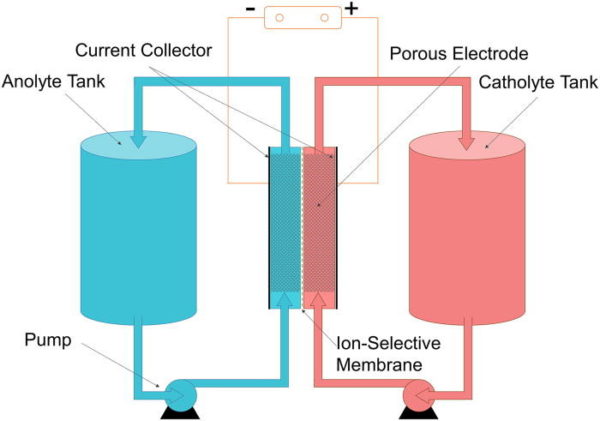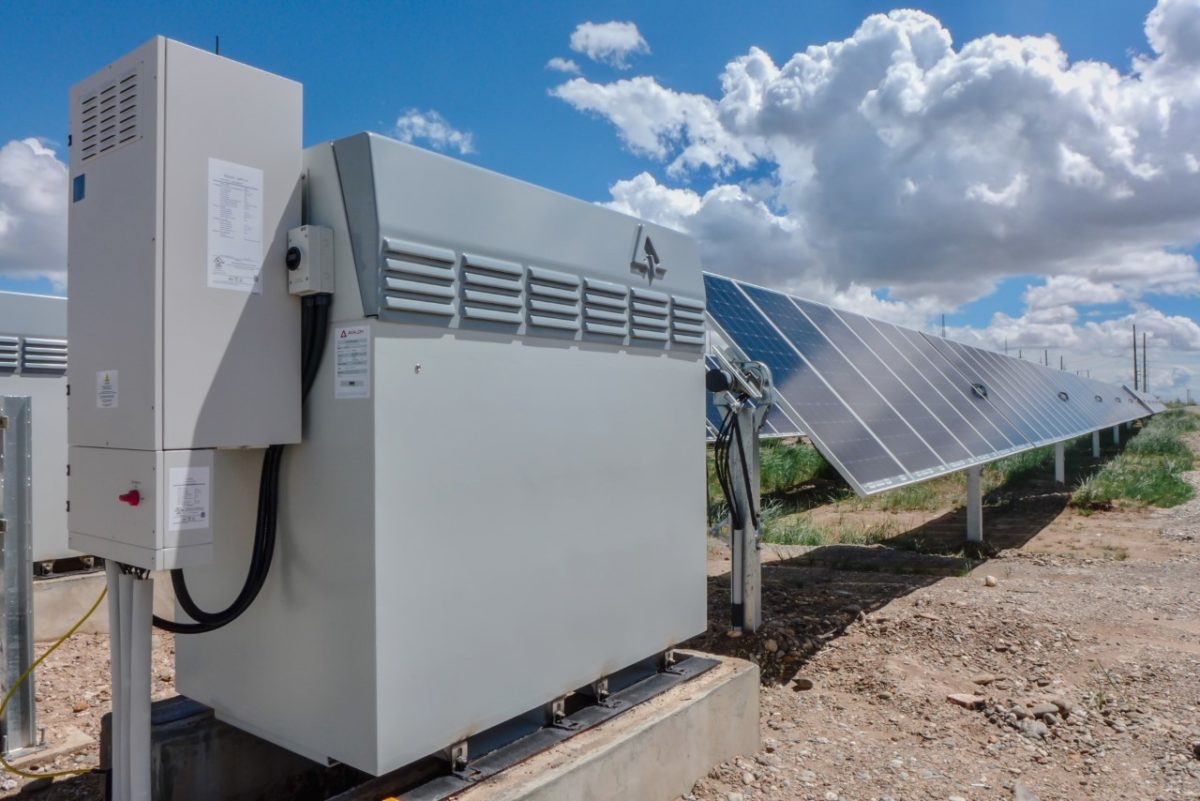Four research and development projects earned investment from the U.S. Department of Energy (DOE) as part of its Long Duration Storage Shot.
The $17.9 million in funds aim to drive innovation that will meet the storage shot’s goal of a 90% cost reduction below 2020 Lithium-ion levels in 10-hour storage within a decade.

The DOE said the target is key to reaching President Biden’s goal of net-zero carbon emissions from the electricity grid by 2035 and economy-wide by 2050. As more renewable energy sources enter the grid, a need for reliable, long-lasting storage is necessary due to the intermittent nature of solar and wind generation. Low-cost of storage will be essential to deploying more renewables, said DOE.
Several DOE offices conduct energy storage activities, and the President’s Fiscal Year 2022 Budget Request included a total of $1.16 billion for these activities, tracked through the Energy Storage Grand Challenge crosscut.

Image: Wikimedia Commons
Selected projects are working to improve flow battery manufacturing processes for individual components, and will be integrated into a prototype system with mid-sized capacity for grid and industrial applications.
Flow batteries are electrochemical storage devices that use reusable, externally stored electrolytes, something the DOE said makes them less expensive, safer, more flexible and adaptable when compared to lithium-ion.
Awardees
Largo Clean Energy and partners – Wilmington, Mass. – $4.19 million for the development of highly efficient manufacturing processes for affordable, grid-scale flow batteries. Largo Clean Energy’s vanadium electrolyte processing supports its storage system, which is integrated with power conditioning, system control, and thermal management subsystems.
TreadStone Technologies – Princeton, New Jersey – $4.99 million to develop roll-to-roll technology for manufacturing metallic electrodes and bipolar plates, essential components of flow batteries.
Otoro Energy – Broomfield, Colo. – $4.14 million to improve the cost, scalability, and performance of metal chelate flow battery systems. The company describes its new battery chemistry as a drop-in replacement for vanadium-ion, which it said is too expensive and rare for large-scale deployment.
Quino Energy – Menlo Park, Calif. – $4.58 million to strengthen U.S. domestic flow battery manufacturing ecosystem by developing scalable, cost-effective and continuous process for producing aqueous organic flow battery reactants. The technology stores energy in organic molecules dissolved in neutral pH water.
This content is protected by copyright and may not be reused. If you want to cooperate with us and would like to reuse some of our content, please contact: editors@pv-magazine.com.









By submitting this form you agree to pv magazine using your data for the purposes of publishing your comment.
Your personal data will only be disclosed or otherwise transmitted to third parties for the purposes of spam filtering or if this is necessary for technical maintenance of the website. Any other transfer to third parties will not take place unless this is justified on the basis of applicable data protection regulations or if pv magazine is legally obliged to do so.
You may revoke this consent at any time with effect for the future, in which case your personal data will be deleted immediately. Otherwise, your data will be deleted if pv magazine has processed your request or the purpose of data storage is fulfilled.
Further information on data privacy can be found in our Data Protection Policy.